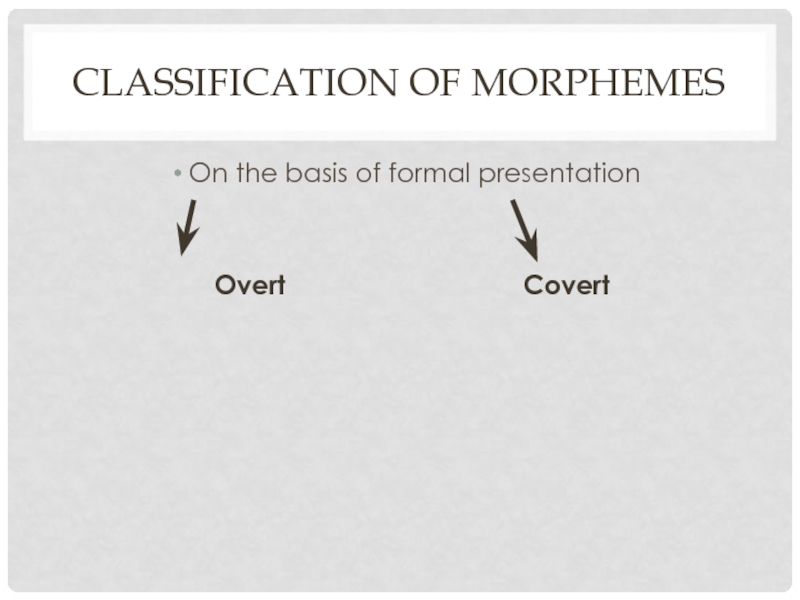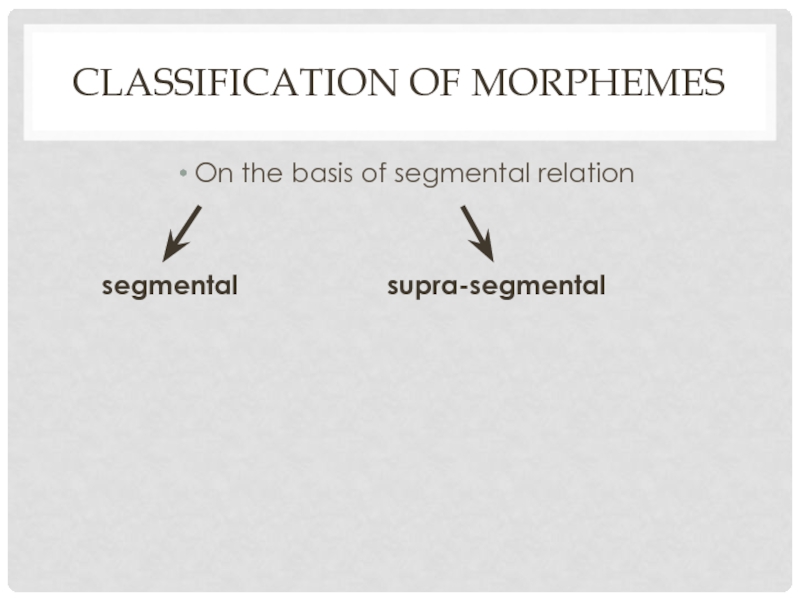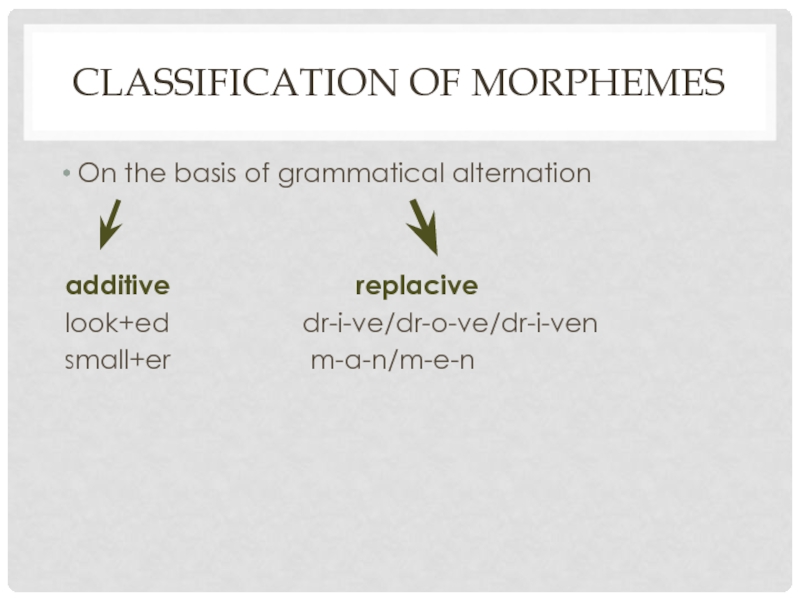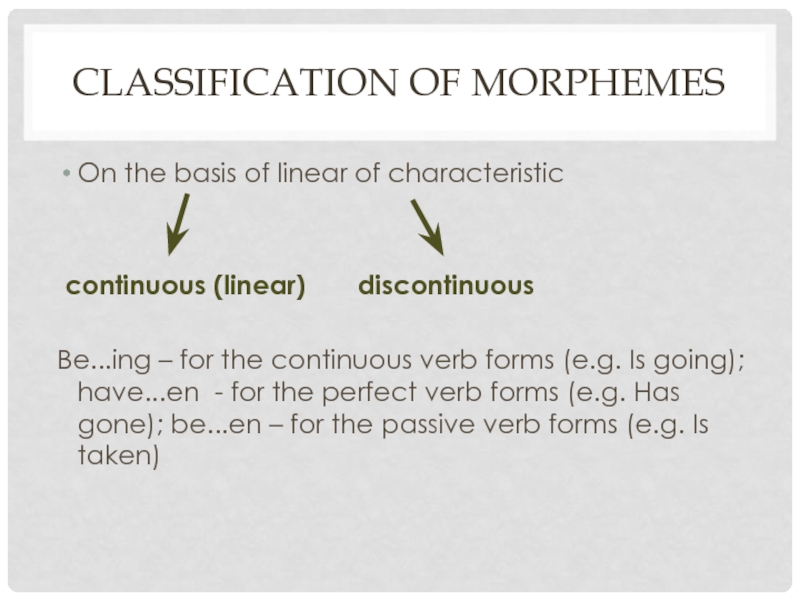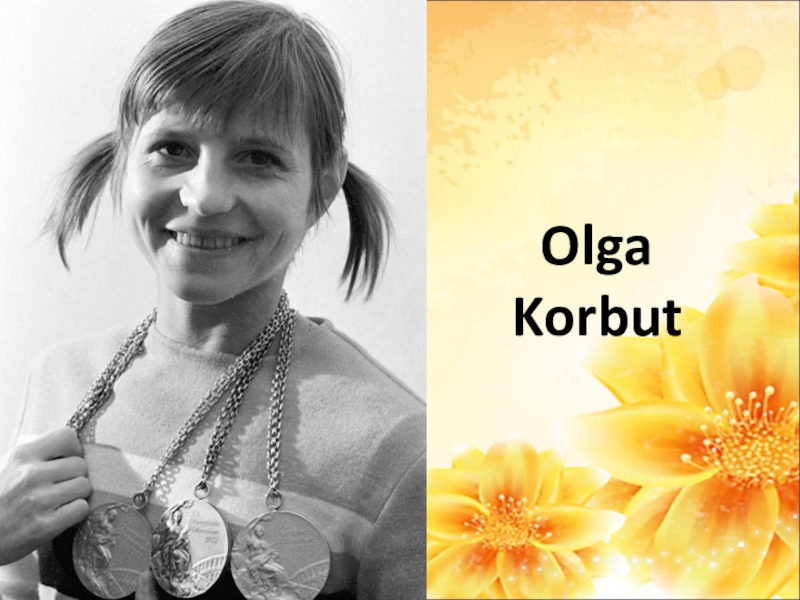of this theory
The method of ‘distributional analysis’ and three types of morphemes
- Главная
- Разное
- Образование
- Спорт
- Естествознание
- Природоведение
- Религиоведение
- Французский язык
- Черчение
- Английский язык
- Астрономия
- Алгебра
- Биология
- География
- Геометрия
- Детские презентации
- Информатика
- История
- Литература
- Математика
- Музыка
- МХК
- Немецкий язык
- ОБЖ
- Обществознание
- Окружающий мир
- Педагогика
- Русский язык
- Технология
- Физика
- Философия
- Химия
- Шаблоны, фоны, картинки для презентаций
- Экология
- Экономика
Презентация, доклад на тему The alloemic theory and classification of lingual units on the basis of this theory The method of ‘distributional analysis’ and three types of morphemes
Содержание
- 1. The alloemic theory and classification of lingual units on the basis of this theory The method of ‘distributional analysis’ and three types of morphemes
- 2. The alloemic theory Allo-terms:
- 3. The aim of distributional analysis is to
- 4. The environment of a unit
- 5. ‘distributional analysis’ I. The analysed text is
- 6. Types of distributionContrastive Non-contrastive
- 7. Classification of morphemesOn the basis of the
- 8. Productive bound morphemes1. The segments – (e)s
- 9. Classification of morphemesOn the basis of formal
- 10. Classification of morphemesOn the basis of segmental
- 11. Classification of morphemesOn the basis of grammatical
- 12. Classification of morphemesOn the basis of linear
- 13. Thank you for your attention
The alloemic theory Allo-terms: Eme-terms:
Слайд 3The aim of distributional analysis is to fix and study the
units of language in relation to their textual environments, i.e. the adjoining elements in the text
Слайд 5‘distributional analysis’
I. The analysed text is divided into recurrent segments
consisting of phonemes (morphs)
e.g. The/boat/s/were/gain/ing/speed
II. The environmental features of the morphs are established and the corresponding idetifications are effected
e.g. The/boat/s/were/gain/ing/speed
II. The environmental features of the morphs are established and the corresponding idetifications are effected
Слайд 6Types of distribution
Contrastive Non-contrastive Complementary
The suffixes
“free alternants” the allomorphs
- (e)d,-ing - (e)d, -t of the plural
in the verb-forms learned, morpheme /s/, /z/, /iz/
returned,returing leant the plural allomorph
-en, oxen, children
- (e)d,-ing - (e)d, -t of the plural
in the verb-forms learned, morpheme /s/, /z/, /iz/
returned,returing leant the plural allomorph
-en, oxen, children
Слайд 7Classification of morphemes
On the basis of the degree of self-dependence
free
bound
e.g. Handful hand (free) + ful (bound)
e.g. Handful hand (free) + ful (bound)
Слайд 8Productive bound morphemes
1. The segments – (e)s [-z,-s,-iz]: the plural of
nouns, the possessive case of nouns, the third person singular present of verbs
2. The segments -(e)d [-d,-t,-id]: the past and past participle of verbs
3. The segments – ing: the gerund and present participle
4. The segments – er, est: the comparative and superlative degrees of adjectives and adverbs
2. The segments -(e)d [-d,-t,-id]: the past and past participle of verbs
3. The segments – ing: the gerund and present participle
4. The segments – er, est: the comparative and superlative degrees of adjectives and adverbs
Слайд 11Classification of morphemes
On the basis of grammatical alternation
additive
replacive
look+ed dr-i-ve/dr-o-ve/dr-i-ven
small+er m-a-n/m-e-n
look+ed dr-i-ve/dr-o-ve/dr-i-ven
small+er m-a-n/m-e-n
Слайд 12Classification of morphemes
On the basis of linear of characteristic
continuous (linear)
discontinuous
Be...ing – for the continuous verb forms (e.g. Is going); have...en - for the perfect verb forms (e.g. Has gone); be...en – for the passive verb forms (e.g. Is taken)
Be...ing – for the continuous verb forms (e.g. Is going); have...en - for the perfect verb forms (e.g. Has gone); be...en – for the passive verb forms (e.g. Is taken)
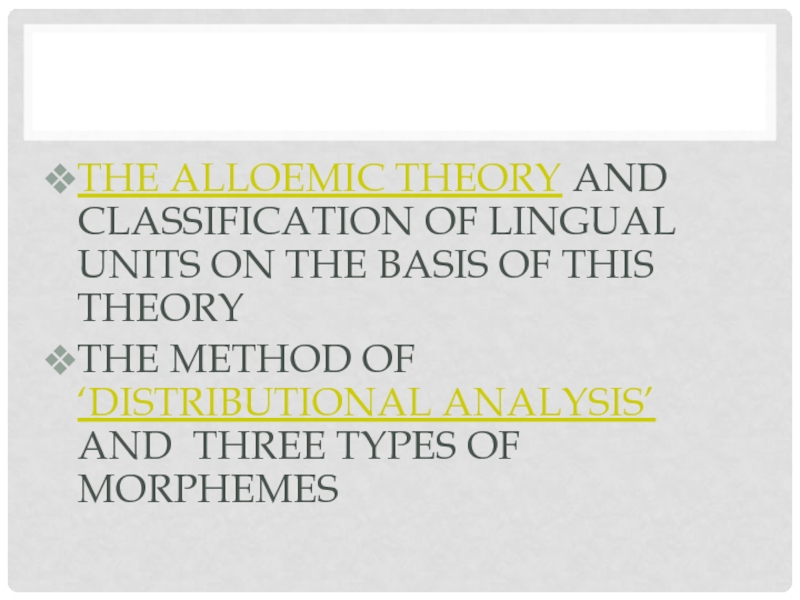
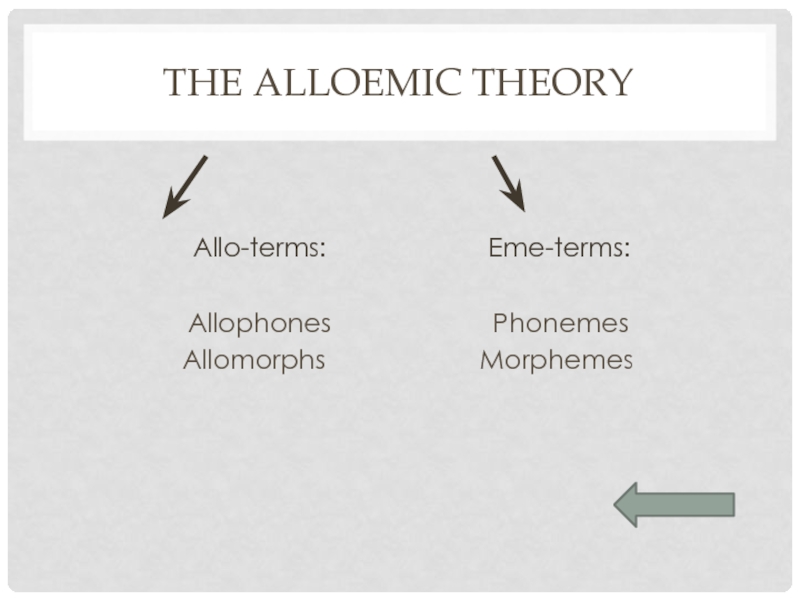
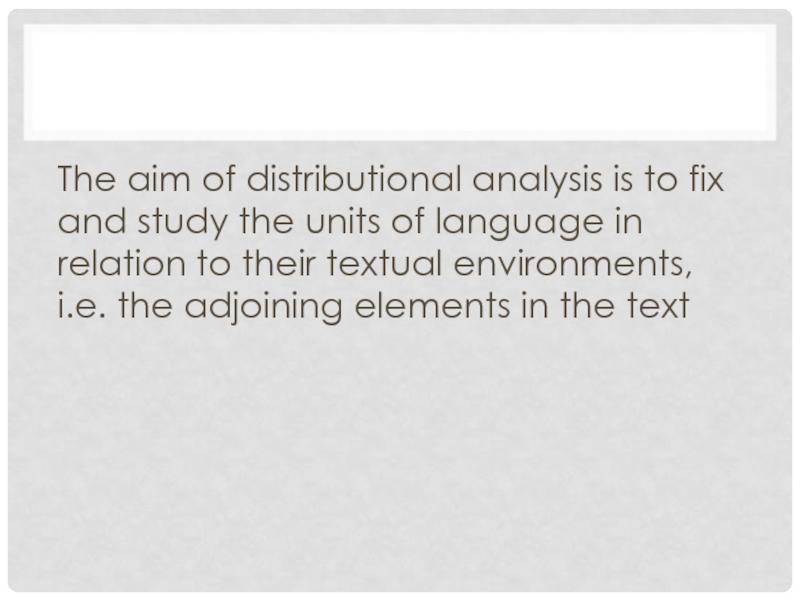
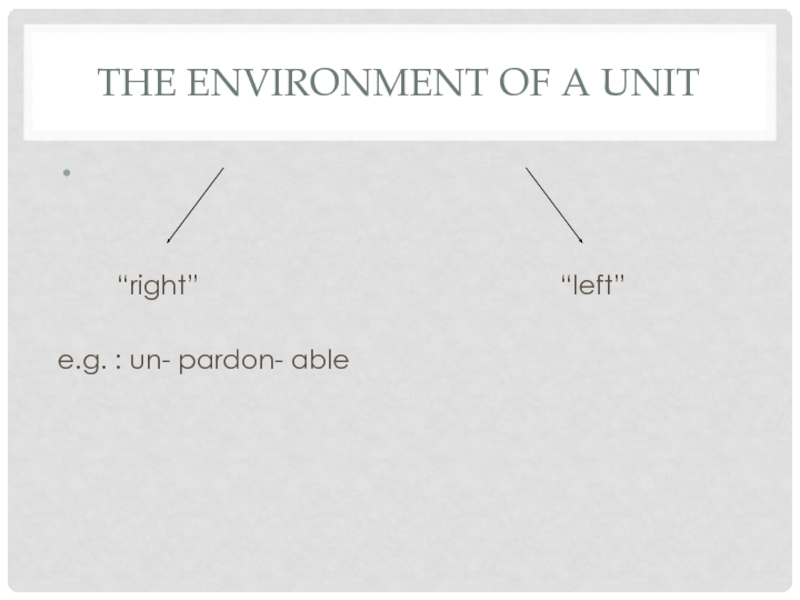
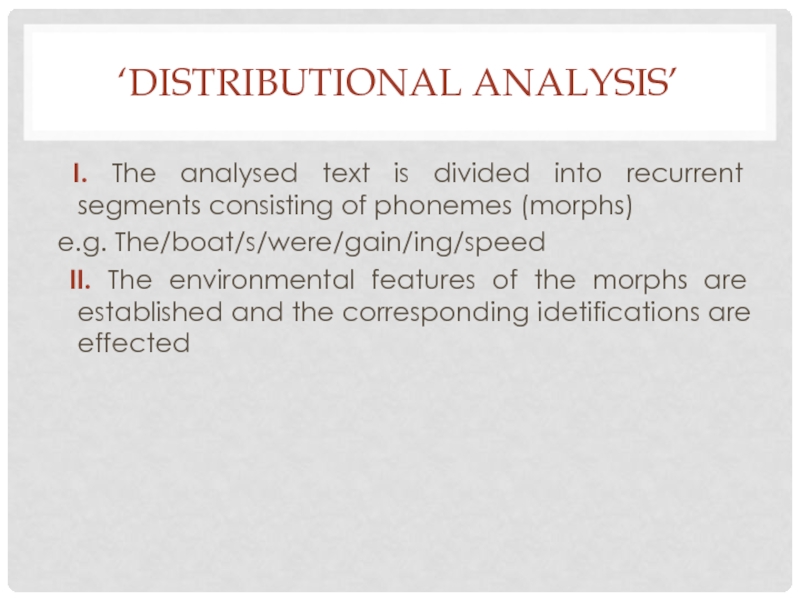
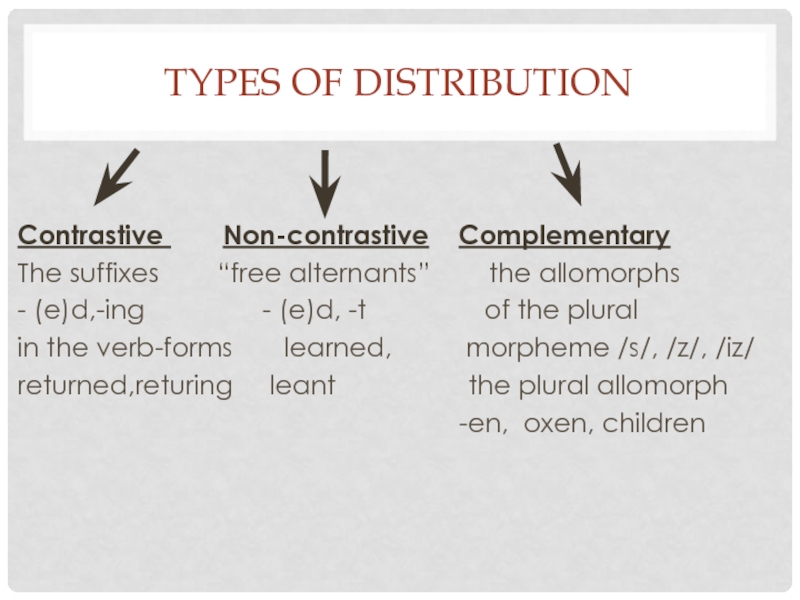
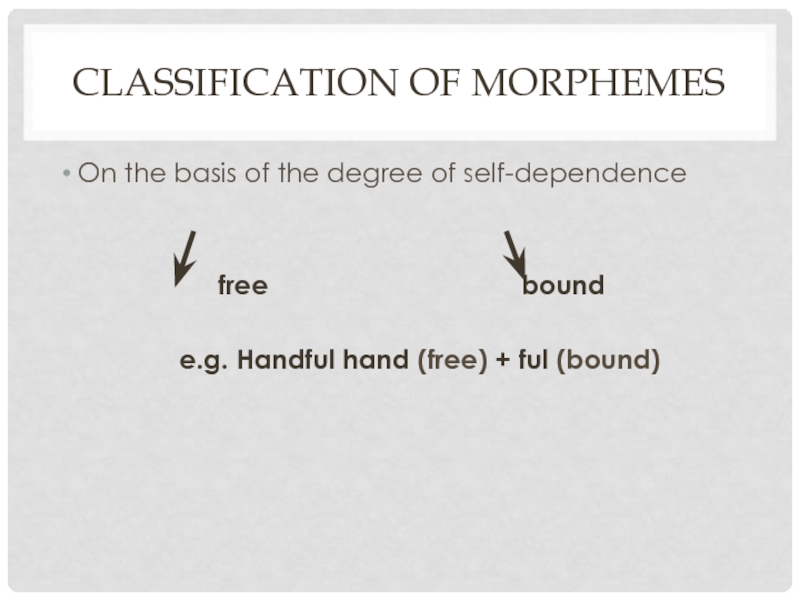
![The alloemic theory and classification of lingual units on the basis of this theory The method of ‘distributional analysis’ and three types of morphemes Productive bound morphemes1. The segments – (e)s [-z,-s,-iz]: the plural of Productive bound morphemes1. The segments – (e)s [-z,-s,-iz]: the plural of nouns, the possessive case of nouns,](/img/thumbs/4c70ea143aa5e272873cbcaa8a454c6f-800x.jpg)
